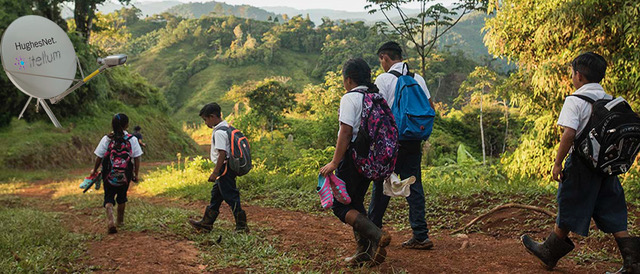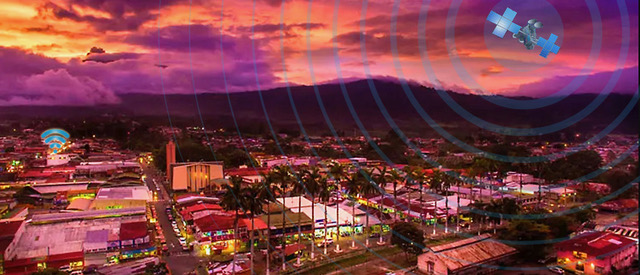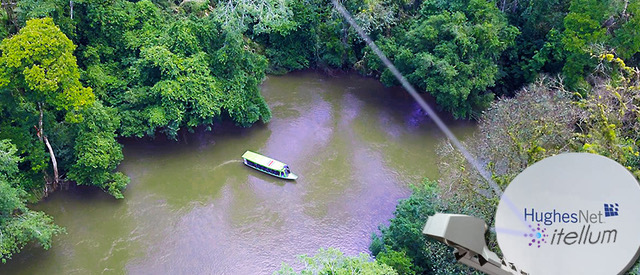Furthering Education: Bringing Internet to Rural Schools
Costa Rica has long been known for its high literacy rate as compared to the world average. Historically from 1984 to 2018, the country has had a 97.86 % literacy rate in contrast to the 84.62% world rate. This statistic can be attributed to an educational system that has managed to keep school enrollments at a high level. However, technology over this period of time has had a profound effect on the educational approach around the globe and Costa Rica has been served with the task of keeping up the access to education not only in the populated areas but in the rural outskirts as well. The telecommunication and internet service provider company, iTellum has addressed this phenomenon in a big way by developing its fiber optic internet network in urban regions and the best satellite broadband network in rural areas to bring stable much-needed internet throughout the country.
Let’s step back in time and look at the history of education in this small and beautiful country. Surprisingly, the educational system benefitted after the civil war in 1948 due to the disbanding of the military. The budget that was normally spent on the armed forces was allocated to an educational system still in its infancy. After this time the educational system started to take shape, beginning with the education of teachers. However, the development over the years has had a rocky road with teachers having to take a reduction in pay in the 1980s resulting in many leaving the profession or subsidizing it with other jobs to make ends meet. Subsequently, the Ministry of Education decided to employ teachers that were fresh out of secondary school rendering the quality of learning, greatly diminished. Essential resources such as libraries, supplies, books, maps, and other educational materials also became limited. Over time the situation improved however teachers are still among the lowest paid in government positions. It should be noted that the public school system is free but requires that students wear uniforms to maintain a standard across socio-economic differences. Families are also responsible for the purchase of required books and uniforms, however, if families are unable to afford this, there is government assistance available. There are also private and international schools, however, these are much more expensive than the public schools and all materials are at the expense of the families.
The system works well in populated areas such as the Central Valley and other more populated towns. But we have come a long way in the last 20 years and superior internet is now a priority in the learning platform. In order to keep up with the rest of the world, Costa Rica must make sure quality education is available to all, no matter their income or location. Education shapes the future of any country. However Costa Rica has challenges in geography and topography and for many areas, fiber optics is not possible, nor is coaxial cable or even 3G or 4G mobile signal. But that scenario is changing.
In April of 2022, a legal concession was granted to iTellum as the official Internet via Satellite supplier of Costa Rica. The company is wasting no time connecting schools in various areas. So far, four schools and two public colleges located in rural areas have already been connected with high-throughput satellite broadband giving them the connectivity they never thought was possible. These are the Juitö schools in the Alto de Chirripó Indigenous Territory, Cartago; Konobata and Sinoli and Ulujeriñak in Valle La Estrella in Limón and the Bijagual high schools in Aserrí and Kjakuo Sulo in Alto Pacuare in Caserío Jaku. You’ve likely never heard of these places because they are so far off the beaten track that other companies are unable or unwilling to confront the challenging terrain to provide them with service. But iTellum had the foresight to see the necessity of connecting these schools. “Itellum has not only favored the institution in supporting educational development, but also because it is in an indigenous community, the educational center can become a communication center in the event of an emergency and alert the authorities,” commented Luis Muñoz, director of the Juitö school.
It is the fastest satellite internet available in Costa Rica made possible through the company’s employment of HughesNet’s Jupiter 2 satellite that gives coverage to 97% of the country with various packages depending on the size of the school and its student population. With speeds of 25 Megabits per second (Mbps) schools can be connected by Itellums team of experienced technicians quickly, efficiently, and inexpensively. Rural satellite internet makes it possible to interconnect any educational center regardless of whether it is located on a forested mountain in a rural area, cut off by river crossings, or on a remote beach without existing telecommunications infrastructure such as fiber optics, coaxial cable, copper or even 4G cellular antennas. “We are able to easily connect thousands of educational centers in rural areas in nine months, which is why we once again call on national authorities and politicians to raise their voices and help us close the digital divide in public schools and high schools in rural areas”, said Tim Foss, CEO of Itellum Costa Rica. Reinaldo Segura, the director of the Sinoli school said, “The lack of a mobile signal was one of the needs that the Itellum service has solved. Now our students can also interact with communication technologies such as WhatsApp, surf the Internet, and compare themselves with other students from schools closer to the canton capitals”.
“Being the pioneer provider of Satellite Internet service in Costa Rica poses the challenge of, beyond positioning ourselves as the only company to offer this type of service, creating the best alliances with other providers in the telecommunications sector,” added Foss.
The company has already completed more than 70 installations of 20 satellite internet services in areas as remote as Peñas Blancas in San Ramón de Alajuela, Playa Santa Teresa in Cóbano de Puntarenas and Alto de Chirripó, in the Valle de la Estrella in Limon province. Their mission is just starting and promotes a positive future for the Costa Rican educational system, the students, the communities, and the country’s economy looking forward.






